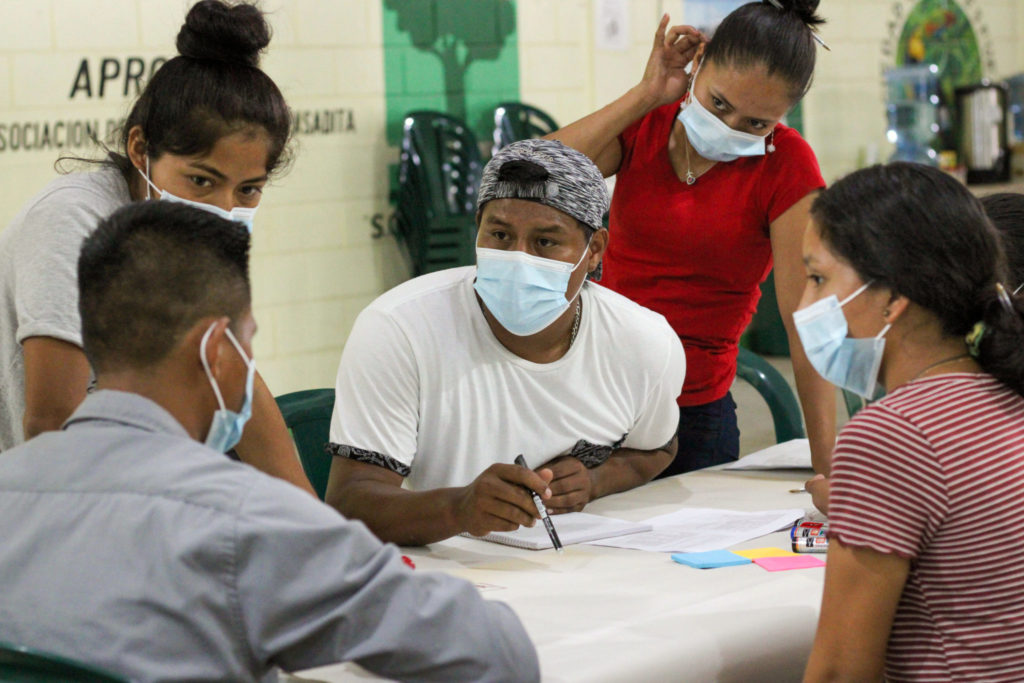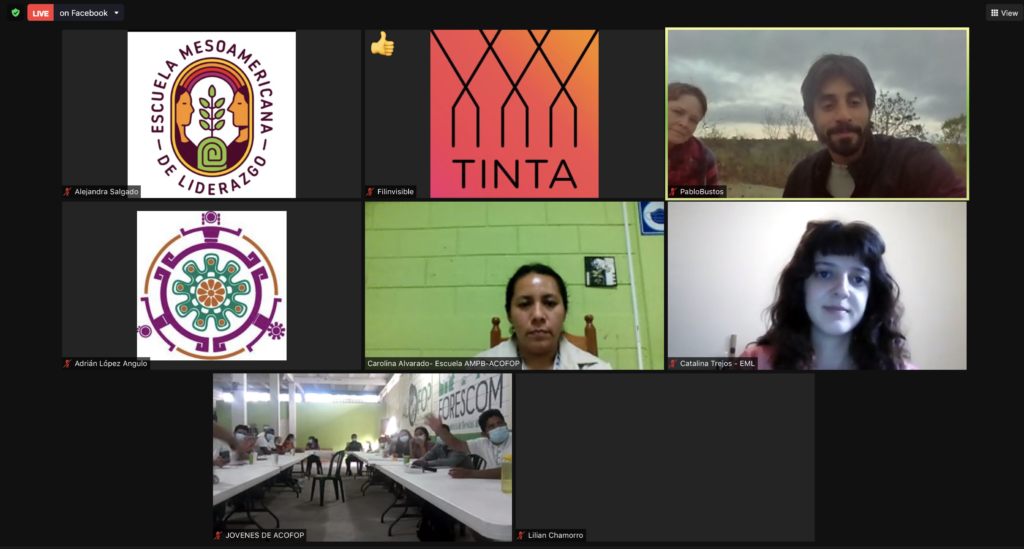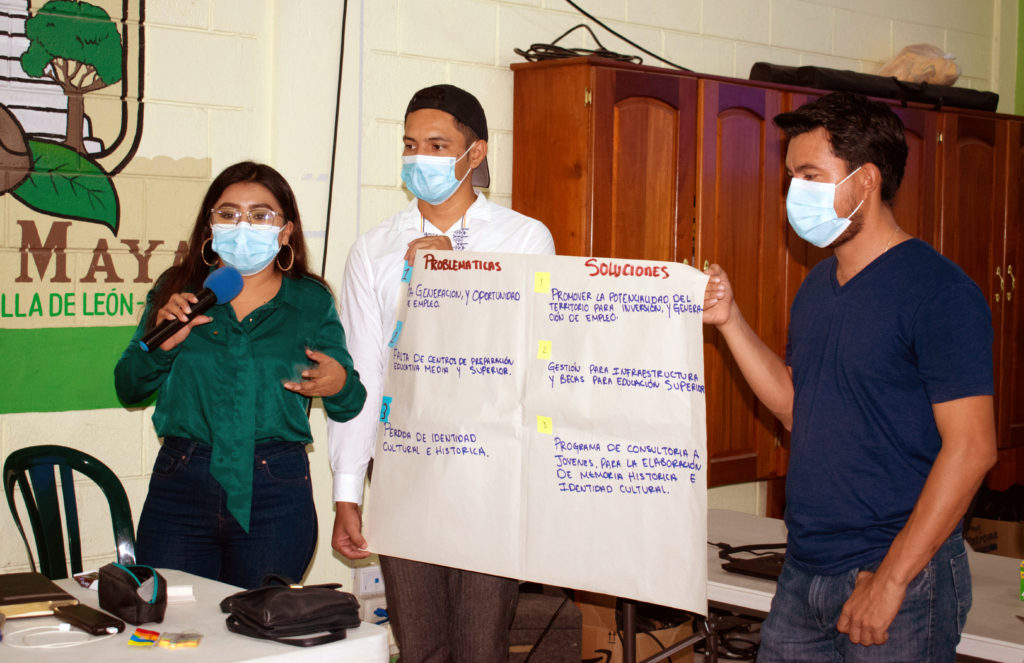Petén, Guatemala – Young people from the Mesoamerican Leadership School (EML) and from the community forestry concessions of Petén participated in a one-day exchange on Connectivity and Community Networks.
During the morning, the group of 16 young people participated in a workshop organized by TINTA, its initiative Weaving Ties and the EML, to share and reflect on the connectivity needs of their communities and territories. In the afternoon, the group joined in a virtual conversation with guests from Mexico, Colombia, and Argentina, to explore and learn about some experiences of community wireless networks that are already working in these countries.
Defining identity, culture and needs
The forest communities of Petén are associated in ACOFOP, the Association of Forest Communities of Petén, and have a solid organization that allows them to sustainably manage the enormous Maya Biosphere Reserve, the largest protected area in Central America. However, the geographical characteristics and the remoteness of the communities from the center of the Department of Petén, in northern Guatemala, limit the conditions of internet access.

Before entering fully into the technical aspects of the installation of telephone and internet networks, community radios, or any other type of technology, the group began by recognizing and exploring their territories, with their strengths, weaknesses and the problems to be solved in each community.
During the workshop, the group discussed their concerns and the problems of each region, identifying differences, but also emphasizing the territorial and organizational strengths, as well as the solutions imagined by the young people. Finally, some basic concepts were defined to prepare the youth to dialogue with the panelists during the virtual conversation.
Community connectivity experiences in Latin America
Three organizations with extensive experience in the indigenous and community telecommunications area took part in a virtual conversation to dialogue and share their experiences with the youth of Guatemala.
Adrián López from Redes por la Diversidad, la Equidad y la Sustentabilidad (Mexico) gave a brief explanation about technological autonomy and some questions and reflections that indigenous peoples and communities have made on the way to their autonomy. He also shared the experience of the Community Cellular Telephony in Oaxaca and Puebla, which in 2016, together with 16 communities, achieved the first-ever fully-licensed community-owned and operated GSM network in Mexico.
Lilian Chamorro from the Colnodo Association (Colombia) shared the experience of 3 community networks: the Mani community network in Casanare, the indigenous, black and peasant INC Network, and the Wexjia CaSil Network: the wind network. Lilian narrated the process of dialogue with community authorities, beginning with the information and training workshops, the design and installation, and the search for alliances with other institutions. The result has been several communities connected through WiFi links and mesh networks with Router Libre and the planning of an Intranet with local contents.
Pablo Bustos from Altermundi (Argentina) shared accessible information to facilitate the deployment of community networks in excluded areas, developing a set of free software and open hardware tools for free, low-cost, and high-performance networks by people without prior specific training. He also highlighted the importance of advocacy work with State institutions for the recognition of different connectivity models.
The interest of the young people of the Mesoamerican School was evident in their active participation during the discussion, with questions and comments that allowed clarifying doubts and generating ideas on how to approach the issue of connectivity in the context of the community forest concessions in Petén.

First steps on the road to a community connectivity project
With this physical and virtual exchange, we seek to strengthen ties and alliances between young people from different territories of Petén with other realities, exchanging experiences to implement local solutions on connectivity and community networks, always taking into account the people, their cultures, and their territories.
In future exchanges and conversations we will continue to explore, in a shared way and with the contributions of the young people of the Mesoamerican School of Leadership, the ways to improve internet access in their communities and how to take advantage of its potential to strengthen community development processes.
This exchange was organized by The Invisible Thread (TINTA) through the Weaving Ties initiative, together with the Mesoamerican School of Leadership (EML), which is part of the Mesoamerican Alliance of Peoples and Forests (AMPB), a coalition of regional and local authorities of the main forests from Mexico to Panama.



